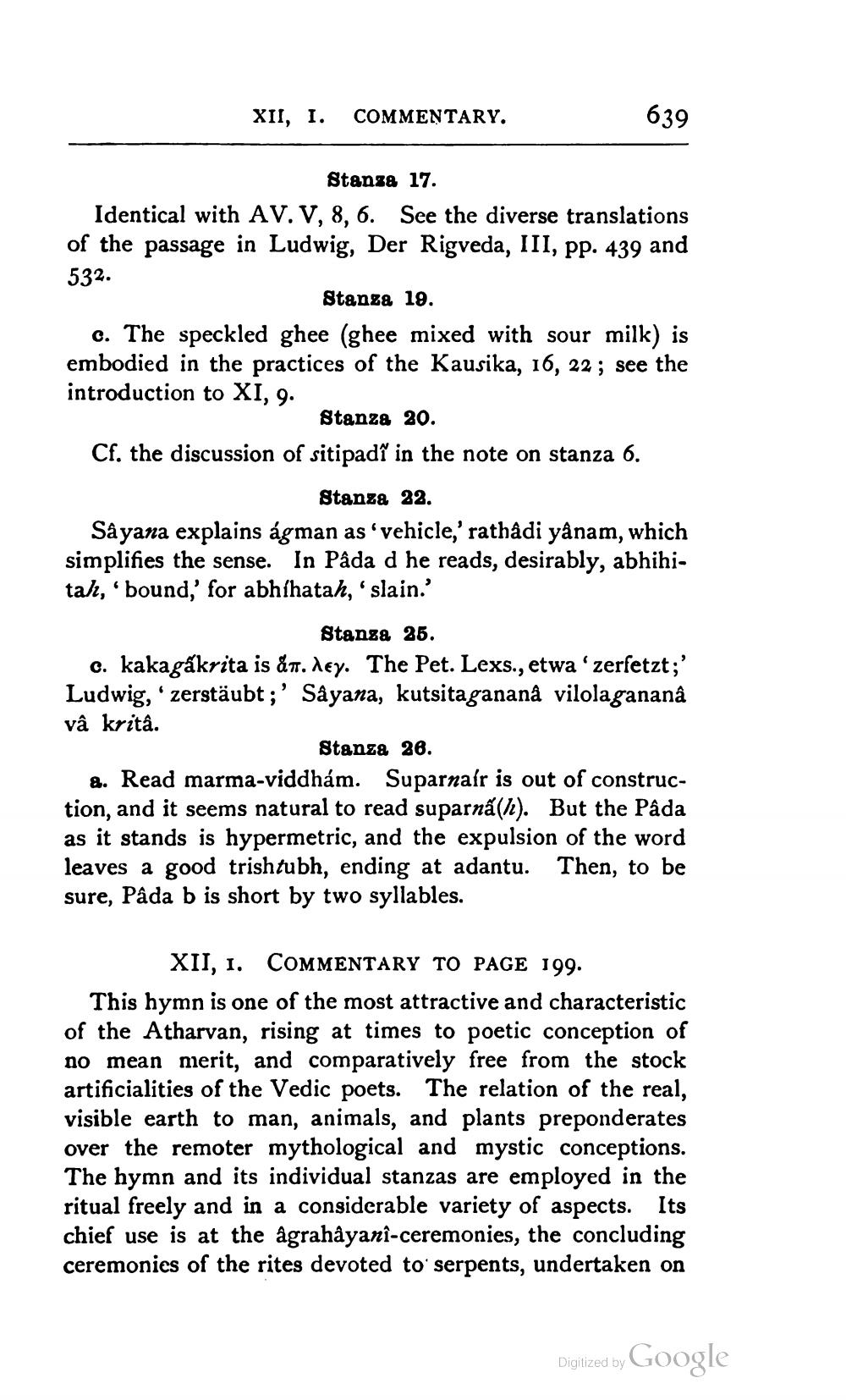________________
XII, 1. COMMENTARY.
639
Stanza 17. Identical with AV. V, 8, 6. See the diverse translations of the passage in Ludwig, Der Rigveda, III, pp. 439 and 532.
Stanza 18. c. The speckled ghee (ghee mixed with sour milk) is embodied in the practices of the Kausika, 16, 22 ; see the introduction to XI, 9.
Stanza 20. Cf. the discussion of sitipadi in the note on stanza 6.
Stanza 22. Sâyana explains ágman as vehicle,' rathadi yânam, which simplifies the sense. In Pâda d he reads, desirably, abhihitah, “bound,' for abhíhatah, 'slain.'
Stanza 25. c. kakagåkrita is år. dey. The Pet. Lexs., etwa 'zerfetzt;' Ludwig,' zerstäubt;' Sayana, kutsitagananå vilolagananâ vâ kritâ.
Stanza 26. 2. Read marma-viddhám. Suparnair is out of construction, and it seems natural to read suparna(1). But the Pada as it stands is hypermetric, and the expulsion of the word leaves a good trishtubh, ending at adantu. Then, to be sure, Pâda b is short by two syllables.
XII, 1. COMMENTARY TO PAGE 199. This hymn is one of the most attractive and characteristic of the Atharvan, rising at times to poetic conception of no mean merit, and comparatively free from the stock artificialities of the Vedic poets. The relation of the real, visible earth to man, animals, and plants preponderates over the remoter mythological and mystic conceptions. The hymn and its individual stanzas are employed in the ritual freely and in a considerable variety of aspects. Its chief use is at the agrahayanî-ceremonies, the concluding ceremonies of the rites devoted to serpents, undertaken on
Digized by Google




